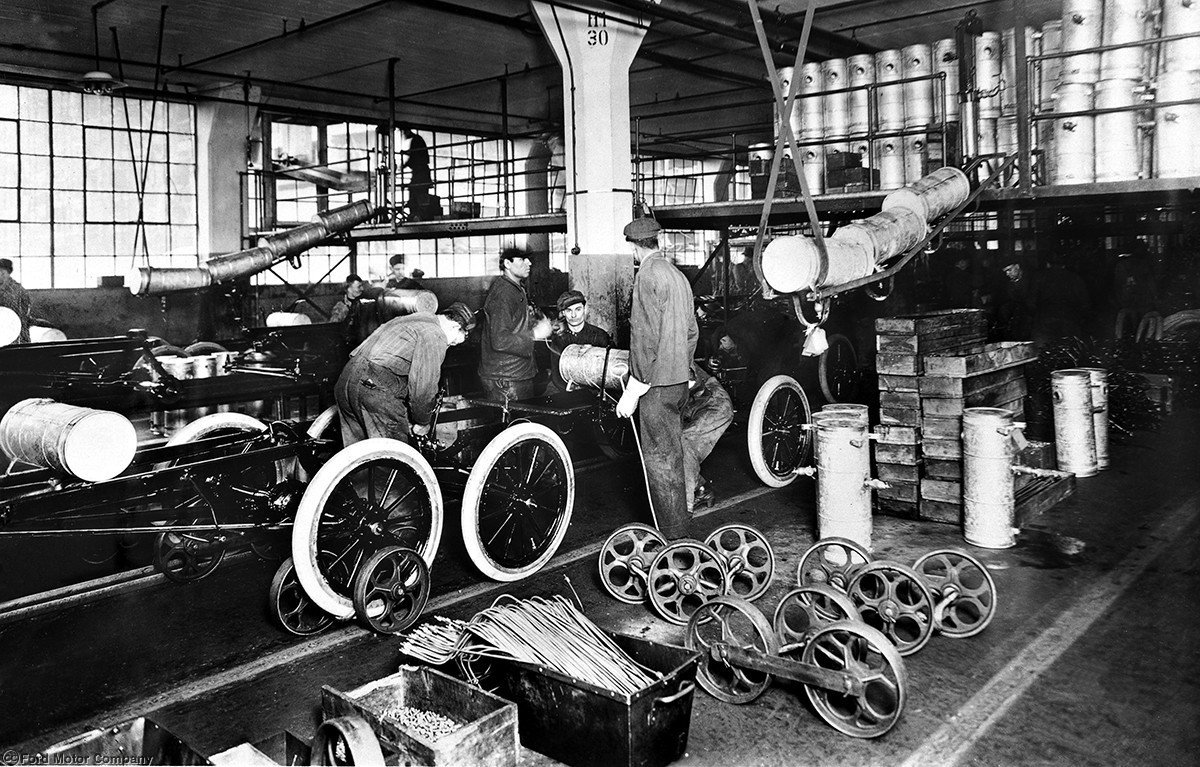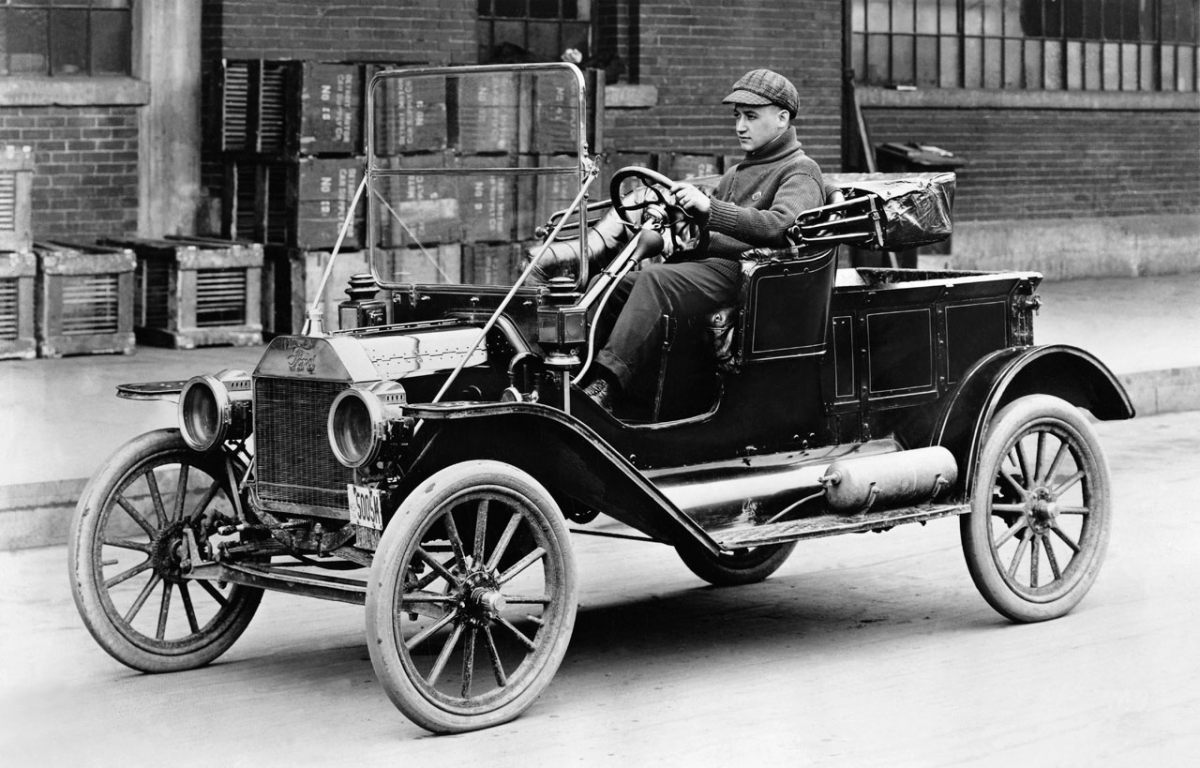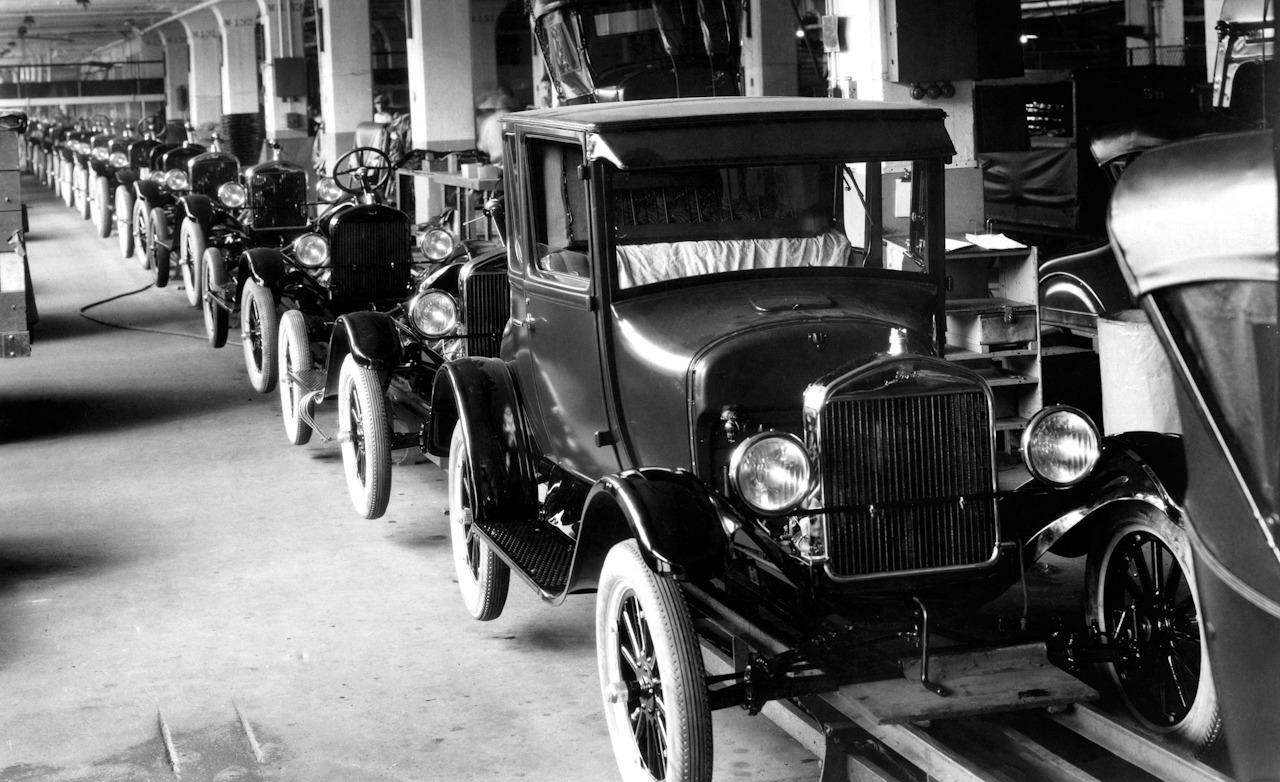It was a brisk December day in Detroit, the first of the month in 1913 when Henry Ford turned the lights on for his new assembly line.
His wasn’t the first assembly line, not by a long shot, but it would go down in history as one of the most important, most memorable, most fetishized assembly lines in history.
Ford’s production of the Model T was so fast, there was only one paint that could dry fast enough for the first few years. Still, it was generally a success, lowering the price of the Tin Lizzie by 30 percent, affordable for even a working stiff on the Ford Line.
Ford’s assembly line was the slickest assembly line since the meat packers of Chicago figured out the fastest way to make cows into burgers.
Assembly Lines of History
To the best of archaeological knowledge, the Chinese ruler, Qin Shi Huangdi (221—210 BCE) used assembly lines to make his terracotta army. Laborers would take specific jobs in the formation of the statues.
For example, one might have a job to make only the noses. It’s a concept as old as humanity: repeated application of the same skill improves one’s speed and technique over time.
It’s the same reason sports teams practice with a ball, the same reason knights practiced with wooden swords. Repetition makes the professional.
When Ransom Olds first applied this concept to the automobile industry in 1902 it was a matter of practicality. He’d suffered a fire at his Detroit plant in 1901 and needed a fast way to catch up on the backup of orders for his Curved Dash Runabout.
It was not, however, the efforts of Olds who inspired the industrialist Ford. We’ll come back to that in a second.
The Model T
When Ford first started making Model Ts, it was October of 1908. At that time, only the wealthy could afford a car, even the Model T. Ford would change this.
Early Model-Ts cost close to $20,000 in today’s money, which was at the time a relatively expensive purchase, well beyond the means of most working or middle-class folks.
Unlike other auto-manufacturers, the aforementioned Ransom Olds being one of them, Ford only made one car, the T, but he did it well. This specialization helped keep his costs down, an operating pillar of his business that would later inform his best practices.
While some attribute Ford’s assembly line techniques to those developed by Ransom Olds, it was more the practices of the slaughterhouses in Chicago. Observations the Ford team made there showed Ford how job specialization could speed up production.
Over the course of seven years, the Ford team developed a system which reversed the disassembly of the slaughterhouses, whereby machines would forge parts, and workers would run the machines or assemble the parts to expedite the Model Ts.
It worked. The Ford plant started spitting out cars. Within a year, Model T production went from 12 hours to produce one car to about an hour and a half. Prices began to drop. Orders increased, and Ford kept upgrading his assembly line with efficiency.
Ford’s Legacy
When Ford started in 1908, there were fewer than 200,00 cars on the road. By 1914, Ford Motor Company was turning out that number of cars every year.
Industry would do its best to catch up to Ford, not only the automotive industry but the whole United States, and eventually the whole world.
It wasn’t until the 1950s, half a century later, that the restaurant industry figured out how to leverage repetition for speed and cost reduction. The first ones to figure it out were the McDonald brothers in 1955.
Now, almost everything in the developed world comes off an assembly line, everything mass produced that is.
Unlike Olds, Ford is still a produced brand of automobiles, which may also be why folks today talk about Ford but less and less about Olds.
Business leaders still talk about Henry Ford like he was down the street inspiring their efficiency. [Psst… Henry Ford passed away in 1947.]
To this day, he remains one of the top ten wealthiest people of the modern age. Eat your heart out Silicon Valley.
Sources: history.com, edn.com, historyofinformation.com




